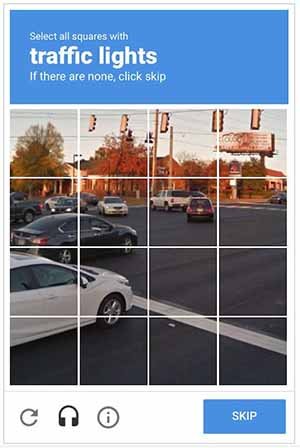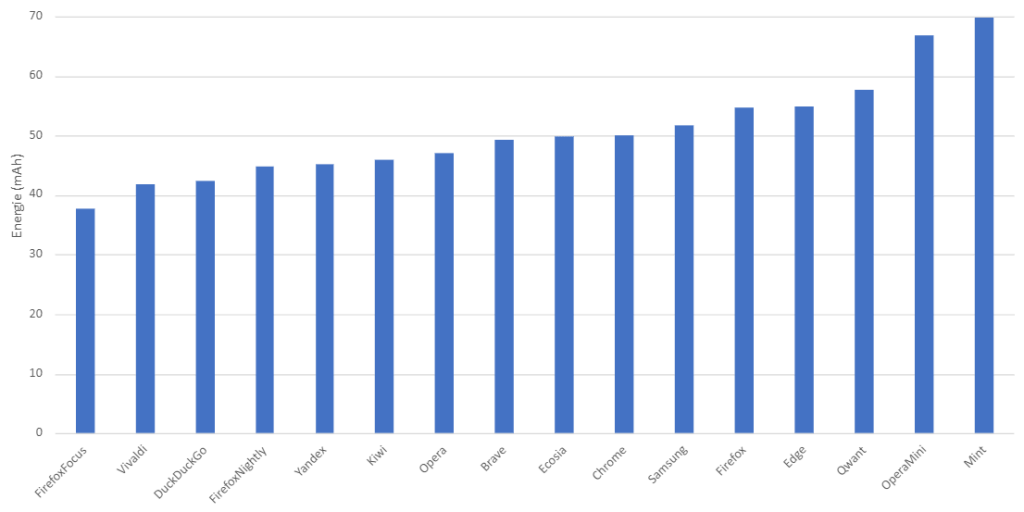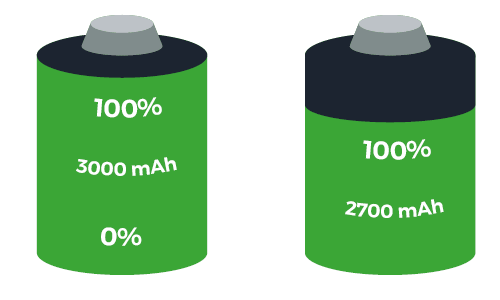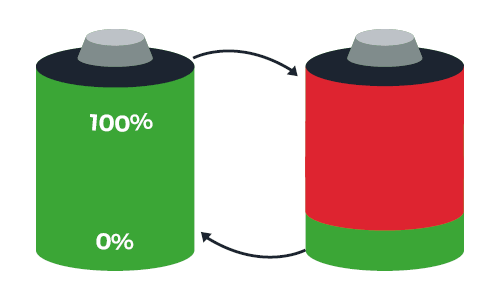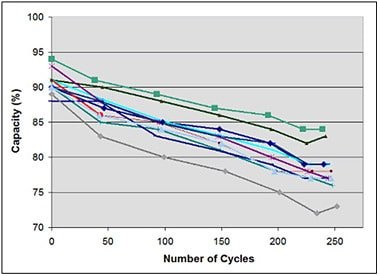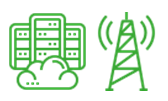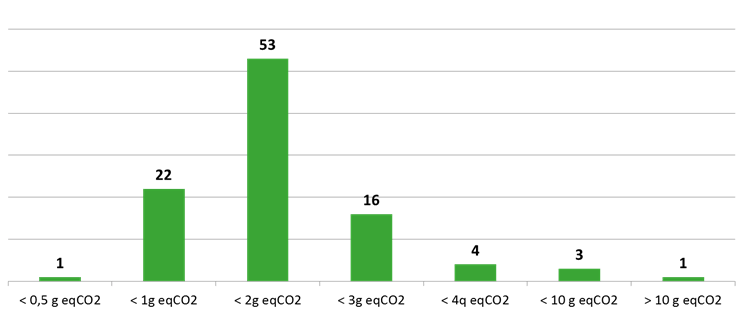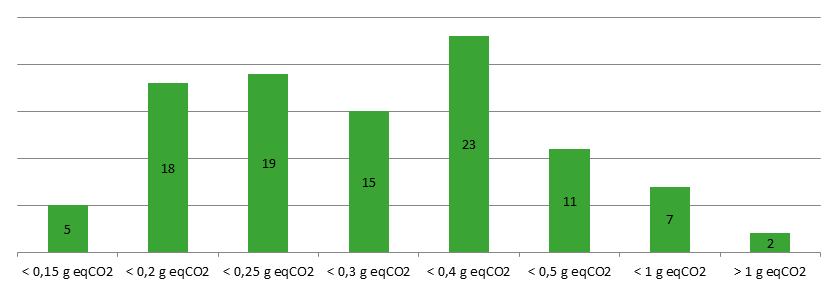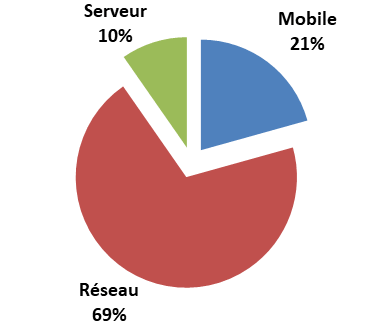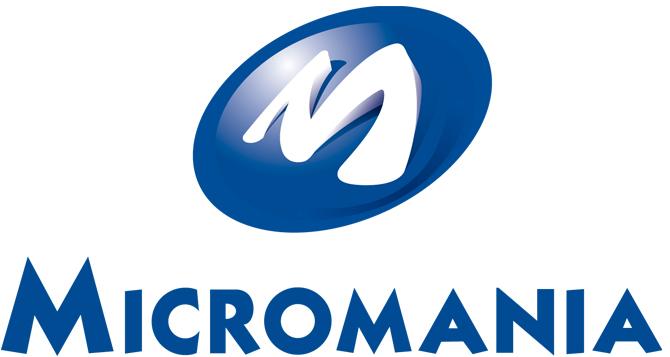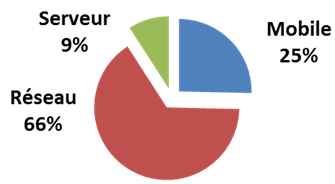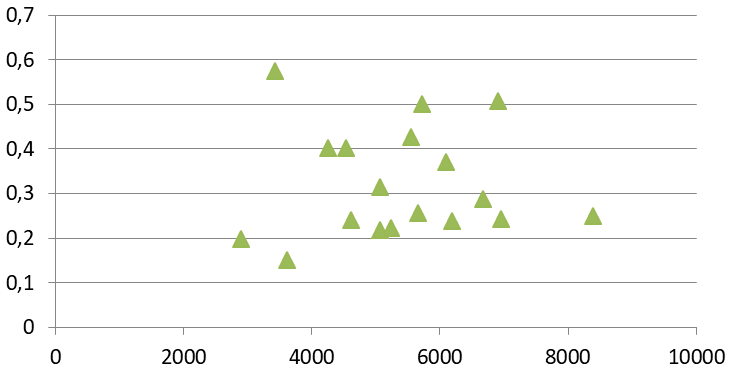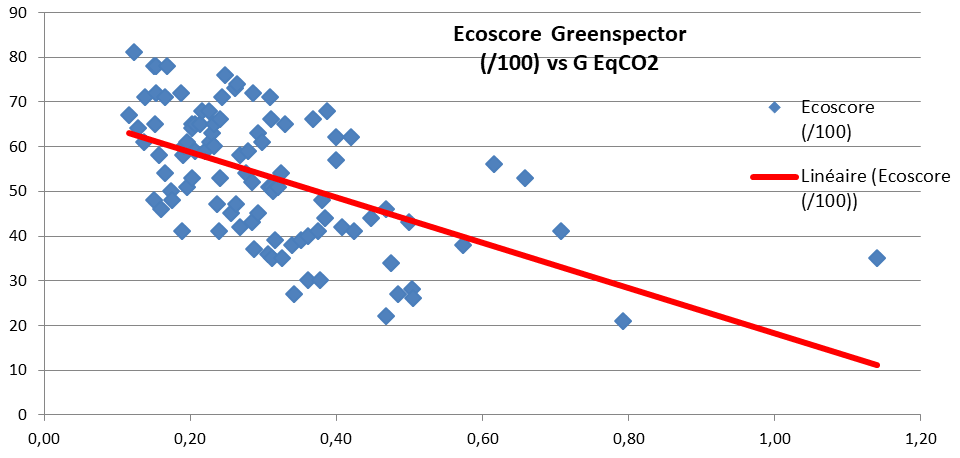ChangeNOW 2022: Digital Sobriety Ranking of Partner Websites
On the occasion of the ChangeNOW 2022 event, taking place from May 19 to 21 at the Grand Palais Éphémère in Paris, Greenspector measured the environmental footprint of the websites of the partners of the event.
Ranking of the environmental footprint of partners
The average carbon impact over one minute of navigation by these 98 partners is 0.50 gEqCO2, or the equivalent of 4.5 meters travelled in a light vehicle. Only 31 websites are above this average, which indicates a good trend. The soberest website in this ranking (the ADEME site, 0.2 gEqCO2) has 8.1 times less impact than the least sober site (heforshe, 1.62 gEqCO2).
The average power consumption (mAh) is 5.23 mAh, and an average of 8.36 MB of exchanged data. The average of web requests is 78.
| Ranking | Name | URLs | Ecoscore | Carbon Impact (gEqCO2) | Energy Consumption (mAh) | Exchanged data (Mo) | Requests | Water Footprint (Liters) | Surface footprint (m²) |
|---|---|---|---|---|---|---|---|---|---|
| 1 | ademe | https://www.ademe.fr/ | 76 | 0.2 | 3.63 | 0.63 | 27 | 0.04 | 0.41 |
| 2 | ashoka | https://www.ashoka.org/fr-fr | 66 | 0.23 | 3.84 | 0.95 | 33 | 0.04 | 0.44 |
| 3 | bsr | https://www.bsr.org/fr/ | 71 | 0.23 | 3.6 | 1.26 | 40 | 0.04 | 0.42 |
| 4 | goodtechlab | https://goodtechlab.io/ | 56 | 0.24 | 3.09 | 0.04 | 77 | 0.04 | 0.38 |
| 5 | makeFR | https://make.org/FR | 70 | 0.24 | 3.79 | 3.28 | 13 | 0.04 | 0.42 |
| 6 | microsoft | https://www.microsoft.com/ | 56 | 0.24 | 4.05 | 1.08 | 31 | 0.04 | 0.46 |
| 7 | sustainableventures | https://www.sustainableventures.co.uk/ | 71 | 0.24 | 4.14 | 1.41 | 30 | 0.04 | 0.47 |
| 8 | ubuntu | https://www.ubuntu-fr.org/ | 70 | 0.24 | 3.58 | 2.61 | 26 | 0.04 | 0.41 |
| 9 | maif | https://www.maif.fr/ | 69 | 0.25 | 3.91 | 1.54 | 38 | 0.04 | 0.45 |
| 10 | parisandco | https://www.parisandco.paris/ | 73 | 0.25 | 3.58 | 2.68 | 32 | 0.04 | 0.41 |
| 11 | franceinvest | https://www.franceinvest.eu/ | 66 | 0.26 | 3.96 | 0.82 | 56 | 0.04 | 0.46 |
| 12 | toniic | https://toniic.com/ | 67 | 0.27 | 3.89 | 1.12 | 56 | 0.04 | 0.46 |
| 13 | pour un reveil ecologique | https://pour-un-reveil-ecologique.org/fr/ | 51 | 0.28 | 4.22 | 2.39 | 40 | 0.04 | 0.49 |
| 14 | usbeketricaen | https://usbeketrica.com/en | 56 | 0.28 | 5.12 | 1.84 | 21 | 0.05 | 0.57 |
| 15 | grandpalais | https://www.grandpalais.fr/en | 71 | 0.28 | 3.63 | 0.92 | 75 | 0.04 | 0.44 |
| 16 | mjash | https://www.mjash.fr/ | 71 | 0.28 | 4.12 | 1.08 | 60 | 0.04 | 0.48 |
| 17 | greentech.earth | https://www.greentech.earth/ | 57 | 0.3 | 3.91 | 3.49 | 48 | 0.04 | 0.46 |
| 18 | saint-gobain | https://www.saint-gobain.com/en | 61 | 0.3 | 3.73 | 2.25 | 70 | 0.04 | 0.45 |
| 19 | evpa | https://evpa.eu.com/ | 51 | 0.31 | 4.23 | 2.63 | 58 | 0.05 | 0.5 |
| 20 | capgemini | https://www.capgemini.com/ | 67 | 0.31 | 3.8 | 1.97 | 74 | 0.05 | 0.46 |
| 21 | whocareschronicles | https://www.whocareschronicles.com/ | 55 | 0.31 | 4.1 | 4.1 | 40 | 0.05 | 0.47 |
| 22 | changemakerxchange | https://changemakerxchange.org/ | 36 | 0.32 | 5.85 | 1.82 | 29 | 0.06 | 0.66 |
| 23 | climateseed | https://climateseed.com/fr | 64 | 0.32 | 3.85 | 4.02 | 54 | 0.05 | 0.45 |
| 24 | halcyonhouse | https://www.halcyonhouse.org/ | 69 | 0.32 | 3.69 | 5.37 | 37 | 0.04 | 0.43 |
| 25 | fresqueduclimat | https://fresqueduclimat.org/ | 51 | 0.33 | 4 | 1.55 | 95 | 0.05 | 0.49 |
| 26 | jokkolabs | https://jokkolabs.net/ | 56 | 0.33 | 4.04 | 2.39 | 79 | 0.05 | 0.49 |
| 27 | socialnest | https://socialnest.org/ | 47 | 0.33 | 4.53 | 2.76 | 58 | 0.05 | 0.53 |
| 28 | leparisien | https://www.leparisien.fr/ | 53 | 0.33 | 4.56 | 2.17 | 69 | 0.05 | 0.54 |
| 29 | Moët Hennessy | https://www.lvmh.com/houses/wines-spirits/ | 60 | 0.34 | 4.18 | 2.02 | 85 | 0.05 | 0.51 |
| 30 | cleantechopen | https://www.cleantechopen.org/ | 49 | 0.35 | 4.39 | 4.56 | 49 | 0.05 | 0.51 |
| 31 | unhcr | https://www.unhcr.org/ | 26 | 0.35 | 4.36 | 2.72 | 77 | 0.05 | 0.52 |
| 32 | Bnpparibas | https://group.bnpparibas/en/ | 60 | 0.36 | 4.28 | 2.1 | 95 | 0.05 | 0.52 |
| 33 | swen-cp | https://www.swen-cp.fr/ | 46 | 0.36 | 3.95 | 4.11 | 77 | 0.05 | 0.48 |
| 34 | yunusandyouth | https://yunusandyouth.com/ | 40 | 0.36 | 4.33 | 2.58 | 87 | 0.05 | 0.52 |
| 35 | lfca.earth | https://lfca.earth/ALL_fr/ | 57 | 0.37 | 4.36 | 2.97 | 88 | 0.05 | 0.53 |
| 36 | bcorporation | https://www.bcorporation.net/en-us/ | 51 | 0.37 | 5.17 | 2.47 | 71 | 0.06 | 0.61 |
| 37 | unwomenen | https://www.unwomen.org/en | 49 | 0.37 | 4.25 | 5.29 | 59 | 0.05 | 0.5 |
| 38 | bmw-foundationen | https://bmw-foundation.org/en/ | 47 | 0.39 | 4.64 | 5.38 | 57 | 0.05 | 0.54 |
| 39 | financefortomorrow | https://financefortomorrow.com/ | 41 | 0.39 | 5.29 | 3.24 | 69 | 0.06 | 0.62 |
| 40 | cdp.neten | https://www.cdp.net/en | 52 | 0.39 | 4.76 | 5.77 | 51 | 0.06 | 0.55 |
| 41 | inwink | https://www.inwink.com/fr/ | 34 | 0.39 | 4.99 | 3.31 | 77 | 0.06 | 0.59 |
| 42 | unesco | https://fr.unesco.org/ | 45 | 0.4 | 4.3 | 4.57 | 90 | 0.06 | 0.52 |
| 43 | rockstart | https://rockstart.com/ | 35 | 0.4 | 5.8 | 3.74 | 55 | 0.06 | 0.67 |
| 44 | cartierwomensinitiative | https://www.cartierwomensinitiative.com/ | 42 | 0.4 | 5.85 | 3.38 | 58 | 0.06 | 0.67 |
| 45 | mirova | https://www.mirova.com/fr | 36 | 0.4 | 5.87 | 1.92 | 84 | 0.06 | 0.69 |
| 46 | fastforward2030 | http://fastforward2030.com/ | 42 | 0.41 | 4.82 | 7.56 | 37 | 0.06 | 0.56 |
| 47 | solarimpulse | https://solarimpulse.com/ | 48 | 0.41 | 5.42 | 3.33 | 83 | 0.06 | 0.64 |
| 48 | bridgeforbillions | https://www.bridgeforbillions.org/ | 5 | 0.41 | 5.84 | 2.6 | 77 | 0.06 | 0.68 |
| 49 | CNN | https://edition.cnn.com/ | 44 | 0.42 | 5.25 | 4.13 | 80 | 0.06 | 0.62 |
| 50 | makesense | https://makesense.org/ | 49 | 0.42 | 4.35 | 7.31 | 60 | 0.06 | 0.52 |
| 51 | bcg | https://www.bcg.com/ | 48 | 0.42 | 4.59 | 4.74 | 92 | 0.06 | 0.56 |
| 52 | kairos-society | https://www.kairos-society.eu/ | 37 | 0.42 | 4.51 | 3.44 | 109 | 0.06 | 0.56 |
| 53 | springwise | https://www.springwise.com/ | 58 | 0.43 | 3.93 | 7.36 | 81 | 0.05 | 0.48 |
| 54 | acumen | https://acumen.org/ | 39 | 0.44 | 4.94 | 3.51 | 109 | 0.06 | 0.6 |
| 55 | gsgii | https://gsgii.org/ | 40 | 0.44 | 4.77 | 3.6 | 118 | 0.06 | 0.59 |
| 56 | gecina | https://www.gecina.fr/en | 63 | 0.45 | 4.09 | 9.01 | 60 | 0.06 | 0.49 |
| 57 | impactfrance | https://www.impactfrance.eco/ | 36 | 0.45 | 7.03 | 4.47 | 44 | 0.07 | 0.8 |
| 58 | orange | https://www.orange.com/fr | 51 | 0.45 | 4.59 | 2.94 | 140 | 0.06 | 0.58 |
| 59 | arrow | https://www.arrow.com/ | 36 | 0.46 | 5.99 | 2.64 | 109 | 0.07 | 0.72 |
| 60 | socialenterprise | https://www.socialenterprise.org.uk/ | 28 | 0.46 | 5.1 | 8.69 | 47 | 0.06 | 0.59 |
| 61 | aigle | https://www.aigle.com/fr/fr | 38 | 0.47 | 5.38 | 8.48 | 49 | 0.06 | 0.63 |
| 62 | kickstart | https://kickstart.org/ | 41 | 0.49 | 3.98 | 10.04 | 78 | 0.06 | 0.49 |
| 63 | paperontherocks | https://paperontherocks.com/ | 43 | 0.49 | 4.52 | 10.36 | 60 | 0.06 | 0.54 |
| 64 | 3dexperiencelab | https://3dexperiencelab.3ds.com/en/ | 52 | 0.5 | 4.24 | 9.51 | 86 | 0.06 | 0.52 |
| 65 | citeo | https://www.citeo.com/ | 38 | 0.5 | 6.87 | 4.47 | 82 | 0.08 | 0.8 |
| 66 | eibenindex | https://www.eib.org/en/index.htm | 47 | 0.5 | 5.38 | 4.79 | 123 | 0.07 | 0.66 |
| 67 | respectocean | https://www.respectocean.com/ | 40 | 0.5 | 4.85 | 9.18 | 74 | 0.06 | 0.58 |
| 68 | unreasonablegroup | https://unreasonablegroup.com/ | 36 | 0.51 | 7 | 5.9 | 66 | 0.08 | 0.81 |
| 69 | euclidnetwork | https://euclidnetwork.eu/ | 33 | 0.53 | 5.3 | 6.68 | 117 | 0.07 | 0.65 |
| 70 | Founder Institute | https://fi.co/ | 41 | 0.54 | 5.57 | 7.67 | 102 | 0.07 | 0.67 |
| 71 | KPMG | https://home.kpmg/xx/en/home.html | 36 | 0.54 | 6.23 | 8.5 | 69 | 0.07 | 0.73 |
| 72 | time-planet | https://www.time-planet.com/fr | 26 | 0.54 | 5.49 | 9.02 | 87 | 0.07 | 0.66 |
| 73 | sweep | https://www.sweep.net/ | 37 | 0.55 | 8.51 | 4.92 | 65 | 0.09 | 0.97 |
| 74 | onepercentfortheplanet | https://www.onepercentfortheplanet.org/ | 52 | 0.56 | 4.54 | 12.69 | 75 | 0.07 | 0.55 |
| 75 | lesechos | https://www.lesechos.fr/ | 44 | 0.58 | 7.06 | 5.7 | 117 | 0.08 | 0.84 |
| 76 | phenixcapitalgroup | https://www.phenixcapitalgroup.com/ | 31 | 0.58 | 5.49 | 10.21 | 94 | 0.07 | 0.66 |
| 77 | lacaserneparis | https://www.lacaserneparis.com/ | 42 | 0.69 | 5.74 | 16.16 | 76 | 0.08 | 0.69 |
| 78 | startupbootcamp | https://www.startupbootcamp.org/ | 20 | 0.69 | 5.33 | 16.9 | 77 | 0.08 | 0.65 |
| 79 | endeavor | https://endeavor.org/ | 59 | 0.7 | 4.56 | 20.03 | 63 | 0.08 | 0.56 |
| 80 | terresdecafe | https://www.terresdecafe.com/en/ | 30 | 0.7 | 5.91 | 7.32 | 212 | 0.09 | 0.77 |
| 81 | ctofrance | https://www.ctofrance.com/ | 28 | 0.76 | 10.29 | 6.09 | 140 | 0.11 | 1.21 |
| 82 | cereshomepage | https://ceres.org/homepage | 55 | 0.77 | 4.96 | 21.57 | 74 | 0.08 | 0.61 |
| 83 | The Hoffmann Global Institute for Business and Society | https://www.insead.edu/centres/the-hoffmann-global-institute-for-business-and-society | 33 | 0.78 | 5.47 | 12.07 | 207 | 0.09 | 0.73 |
| 84 | Start Up Energy Transition | https://www.startup-energy-transition.com/ | 39 | 0.78 | 17 | 0.93 | 36 | 0.15 | 1.88 |
| 85 | hello-tomorrow | https://hello-tomorrow.org/ | 49 | 0.82 | 4.39 | 24.08 | 91 | 0.08 | 0.56 |
| 86 | bonduelleen | https://www.bonduelle.com/en/ | 54 | 0.82 | 4.51 | 24.95 | 74 | 0.08 | 0.57 |
| 87 | ship2b | https://www.ship2b.org/ | 47 | 0.82 | 5.67 | 4.77 | 334 | 0.1 | 0.81 |
| 88 | eban | https://www.eban.org/ | 29 | 0.88 | 8.31 | 17.93 | 107 | 0.11 | 0.99 |
| 89 | undp | https://www.undp.org/ | 34 | 0.89 | 7.55 | 23.86 | 54 | 0.1 | 0.89 |
| 90 | oneyoungworld | https://www.oneyoungworld.com/ | 41 | 0.92 | 4.91 | 29.65 | 63 | 0.09 | 0.61 |
| 91 | apcoworldwide | https://apcoworldwide.com/ | 24 | 0.98 | 7.1 | 18.79 | 200 | 0.11 | 0.91 |
| 92 | sparknews | https://www.sparknews.com/ | 35 | 0.99 | 5.91 | 21.04 | 209 | 0.11 | 0.79 |
| 93 | aptar | https://www.aptar.com/ | 30 | 1.03 | 7.47 | 28.63 | 79 | 0.11 | 0.9 |
| 94 | lafrenchtech | https://lafrenchtech.com/fr/ | 10 | 1.09 | 6.92 | 32.9 | 77 | 0.11 | 0.84 |
| 95 | nordictalks | https://nordictalks.com/ | 38 | 1.09 | 5.7 | 33.32 | 109 | 0.11 | 0.73 |
| 96 | kering | https://www.kering.com/ | 28 | 1.15 | 10.26 | 26.97 | 107 | 0.14 | 1.21 |
| 97 | merciraymond | https://merciraymond.fr/ | 35 | 1.4 | 6.49 | 52.19 | 26 | 0.13 | 0.79 |
| 98 | heforshe | https://www.heforshe.org/fr | 42 | 1.62 | 9.06 | 56.94 | 29 | 0.16 | 1.08 |
Greenspector has been selected for the third consecutive year by the organization to participate and exhibit at ChangeNOW, the unmissable event and the biggest global event for the planet.
Find us on site in the “Accelerate the Ecosystem” area from May 19 to 21 at the Grand Palais Éphémère in Paris. We will answer all your questions. Do not hesitate to contact us to schedule an appointment!

Kimberley DERUDDER has been digital marketing manager at Greenspector for more than 5 years. Kimberley graduated with a master’s degree in Marketing – Communication and specialized in Inbound Marketing after her first two years at Greenspector. Today in charge of the animation of the marketing, social media and lead generation strategy, she also takes care of app comparisons and battles.


